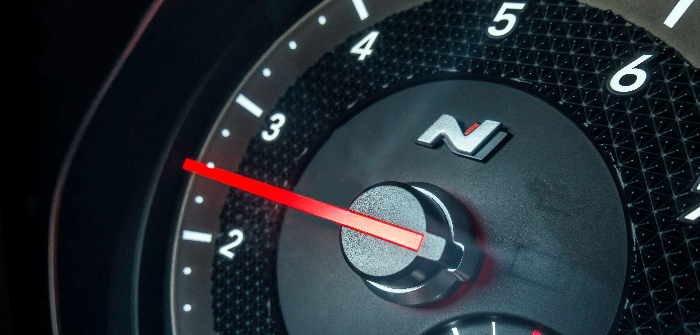Unveiled alongside side the Veloster and Veloster Turbo, the Veloster N demonstrates the performance potential for Hyundai N line-up in the USA. While the Korean OEM continues to work on next-gen technologies such as the Nexo fuel cell SUV, the Veloster N has been designed to deliver maximum driveability from its traditional IC engine.
Mechanically, Veloster N offers a 2.0-liter, direct-injected turbocharged powerplant. The engine boasts up to 275ps at 6,000rpm and up to 260 lb-ft of torque from 1,450-4,700rpm meaning responsive performance at every RPM range.
The turbo system intercooler is isolated from the condenser and radiator for efficient cooling of the intake charge. The system also benefits from a two-stage induction system to enable optimal output, while the engine compression ratio is 9.5:1, high for a turbocharged engine.
Bolted to the motor is a close-ratio, short-throw 6-speed manual transmission with downshift rev-matching capability. Carbon-coated synchro rings and gear material reinforcement mean that operation should be smoother and overall shift force should be lower.
The Veloster N’s clutch also utilizes a double-layer facing disc design for increased burst strength and torque capability. Additionally, the powertrain sports a multimode, high-flow active sport exhaust system with a variable exhaust actuator, which means in N mode, the system yields an engine over-run exhaust crackle during spirited-driving upshifts and rev-matched downshifts.
“Veloster N takes Hyundai to a new level of purchase consideration for true driving enthusiasts in the US market,” said Albert Biermann, head of performance development and high performance vehicle division, Hyundai.
“The Veloster N is another example of Hyundai Motor’s capabilities, creating an exciting sports car with thrilling dynamics combined with a compelling affordability equation as key to the N high-performance concept.”
The Veloster N was born in Namyang, South Korea, Hyundai’s global R&D center, and was honed at the company’s Nurburgring-based testing center in Germany. Production begins in September 2018 in Ulsan, South Korea, with market availability expected in the fourth quarter of this year.


